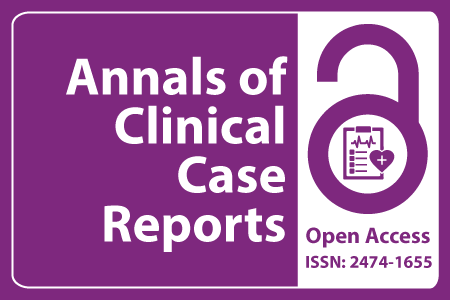
Journal Basic Info
- Impact Factor: 1.809**
- H-Index: 6
- ISSN: 2474-1655
- DOI: 10.25107/2474-1655
Major Scope
- Endocrinology
- Breast Neoplasms
- Lung Cancer
- Psychiatry and Mental Health
- Neurology
- Gastric Cancer
- Physiology
- Hepatitis
Abstract
Citation: Ann Clin Case Rep. 2016;1(1):1012.DOI: 10.25107/2474-1655.1012
Isolated Hemi-hyperplasia
Dinesh Singh, Ocheowelle Okeke, Lea D Seeber and Olugbenga Akingbola
Department of Pediatrics, Tulane University School of Medicine, 1430 Tulane Avenue, New Orleans, 70112, Louisiana, USA
*Correspondance to: Dinesh Singh
PDF Full Text Clinical Image | Open Access
Abstract:
6-month old male presented with macrocephaly (progressive), macrosomia, macroglossia, splenomegaly, and left-sided hemi-hypertrophy. Magnetic Resonance Imaging showed large left cerebral hemisphere and hydrocephalus with normal fourth ventricle consistent with aqueductal stenosis. There was no evidence of any lipomas or hemangiomas. There was no family history of hemi-hypertrophy. Microarray based comparative genome hybridization and chromosome analyses were negative. Workup for Beckwith-Wiedemann syndrome (BWS), Neurofibromatosis, and PTEN hamartoma tumor syndromes (PHTS) was negative. A diagnosis of Isolated Hemi-hyperplasia was made which is characterized by asymmetric overgrowth of one or more regions of the body secondary to abnormal cell proliferation with an estimated incidence of 1 in 86,000. It is associated with seizures, undescended testes, inguinal hernia, communicating hydrocephalus, bicuspid aortic valve, cushing syndrome and increased risk of embryonal tumors particularly wilm’s tumor. It is proposed to be part of the spectrum of phenotypes of BWS, which maps to 11p15.5.
Keywords:
Cite the Article:
Singh D, Okeke O, Seeber LD, Akingbola O. Isolated Hemihyperplasia. Ann Clin Case Rep. 2016; 1: 1012.













